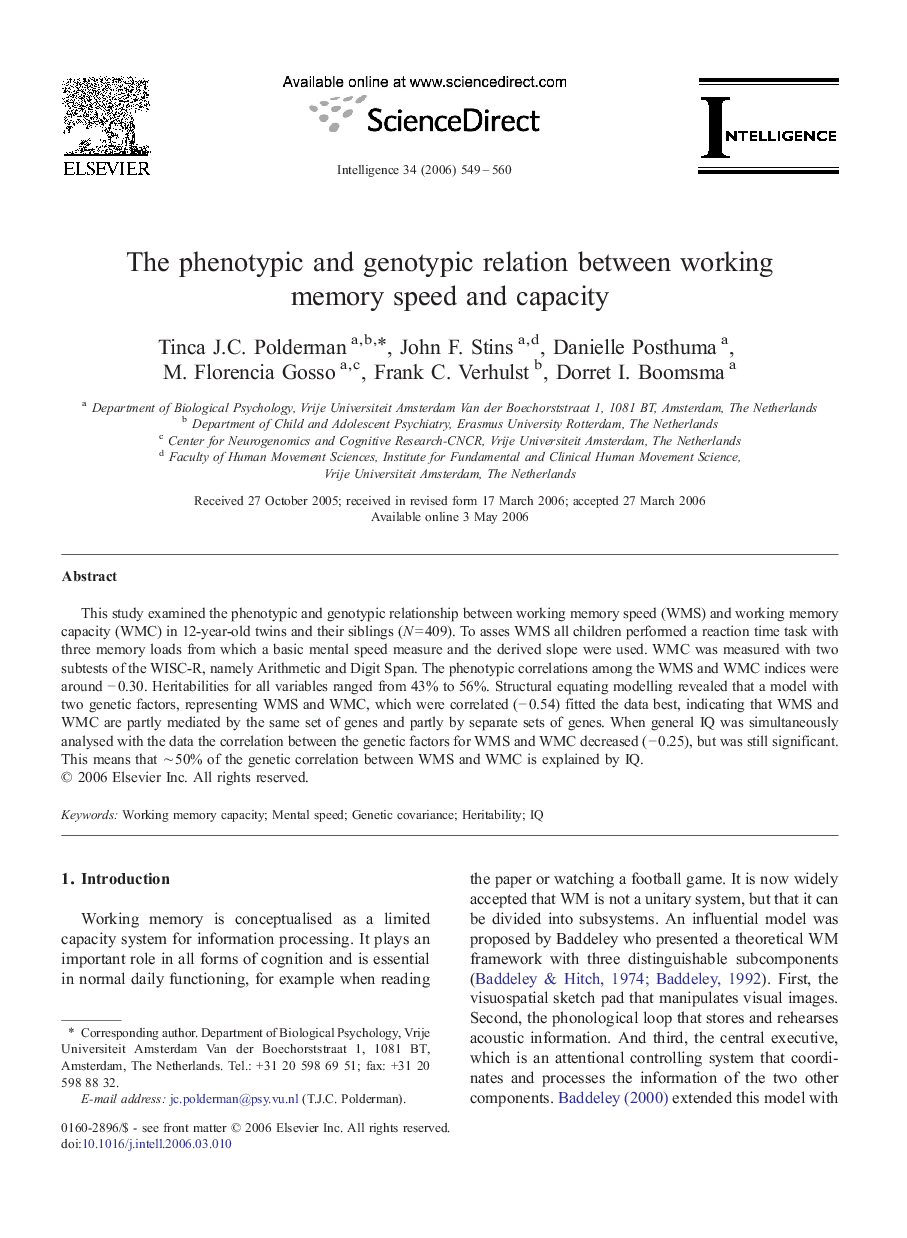| Article ID | Journal | Published Year | Pages | File Type |
|---|---|---|---|---|
| 929466 | Intelligence | 2006 | 12 Pages |
This study examined the phenotypic and genotypic relationship between working memory speed (WMS) and working memory capacity (WMC) in 12-year-old twins and their siblings (N = 409). To asses WMS all children performed a reaction time task with three memory loads from which a basic mental speed measure and the derived slope were used. WMC was measured with two subtests of the WISC-R, namely Arithmetic and Digit Span. The phenotypic correlations among the WMS and WMC indices were around − 0.30. Heritabilities for all variables ranged from 43% to 56%. Structural equating modelling revealed that a model with two genetic factors, representing WMS and WMC, which were correlated (− 0.54) fitted the data best, indicating that WMS and WMC are partly mediated by the same set of genes and partly by separate sets of genes. When general IQ was simultaneously analysed with the data the correlation between the genetic factors for WMS and WMC decreased (− 0.25), but was still significant. This means that ∼ 50% of the genetic correlation between WMS and WMC is explained by IQ.
